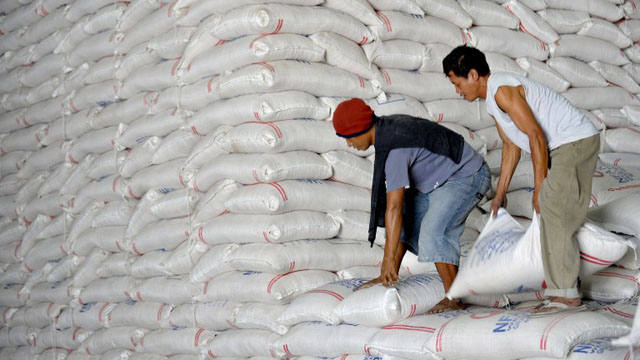SUMMARY
This is AI generated summarization, which may have errors. For context, always refer to the full article.

MANILA, Philippines – The Department of Agriculture (DA) said the Philippines might not be able to do away with rice imports at least in the near future because of its commitments under international agreements.
In a statement on Thursday, March 21, Agriculture Secretary Proceso Alcala said the country is bound under agreements such as the World Trade Organization (WTO) to allow 350,000 metric tons of rice into the country under the minimum access volume (MAV).
The 187,000 MT volume that will be imported in 2013 is within the MAV, and is covered by a 40% in-quota tariff. The Philippines’ quantitative restriction (QR) allows the Philippines to limit the volume of rice that enters the country’s borders and prevents the influx of cheap rice from other countries.
The Philippines is currently negotiating for an extension of the QR. In November, the WTO deferred its decision on the Philippines’ request.
“I have always clarified that once we achieve rice self-sufficiency by the end of 2013, we may not be able to do away with provisions of our international agreements that require us to allow rice from other countries to enter our borders, like those under the WTO and the Association of South East Asian Nations (ASEAN),” Alcala said.
The programmed importation of 187,000 MT for 2013 would be made within 350,000 MT MAV. These would be used for the lean months of June to September when a gap in rice production is expected because of the onset of typhoons.
The country intends to surpass the 2012 rice production of 18 million MT by producing 20 million MT this year.
“The Food Staples Sufficiency Program defines self-sufficiency as the country’s ability to meet its national food requirements, while maintaining a buffer stock to be used in times of need. We are working to meet our per capita consumption of about 115 kilograms per person per year, given our population of about 99 million Filipinos,” Alcala said.
Alcala said the Philippines is preparing to export 50 to 100 MT of premium rice to Hong Kong, Macau, and Europe in 2013. To be shipped are heirloom rice varieties from Benguet as well as colored rice varieties from Quezon province and Mindanao region.
The volume of premium rice exports would be hiked to 100,000 MT by 2014, and then 300,000 metric tons by 2016.
“In the same manner, we are already preparing to balance the situation this early by targeting exports of premium quality and organic rice, which comparatively fetch higher prices in the international market than ordinary rice entering our country,” Alcala also said. – with reports from Cai Ordinario/Rappler.com
Add a comment
How does this make you feel?
![[In This Economy] A counter-rejoinder in the economic charter change debate](https://www.rappler.com/tachyon/2024/04/TL-counter-rejoinder-apr-20-2024.jpg?resize=257%2C257&crop=267px%2C0px%2C720px%2C720px)
![[Vantage Point] Joey Salceda says 8% GDP growth attainable](https://www.rappler.com/tachyon/2024/04/tl-salceda-gdp-growth-04192024.jpg?resize=257%2C257&crop_strategy=attention)
![[ANALYSIS] A new advocacy in race to financial literacy](https://www.rappler.com/tachyon/2024/04/advocacy-race-financial-literacy-April-19-2024.jpg?resize=257%2C257&crop_strategy=attention)


There are no comments yet. Add your comment to start the conversation.